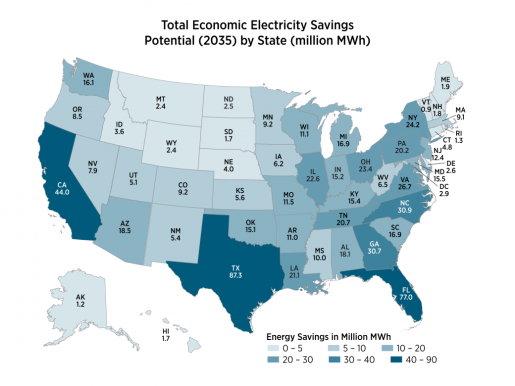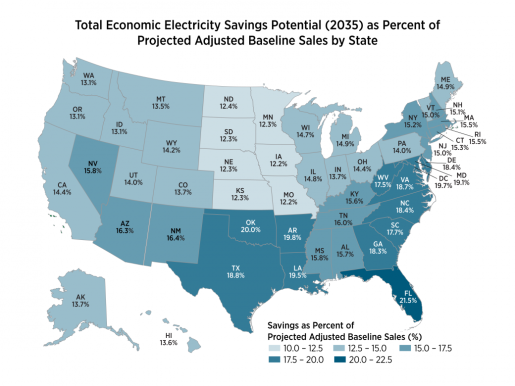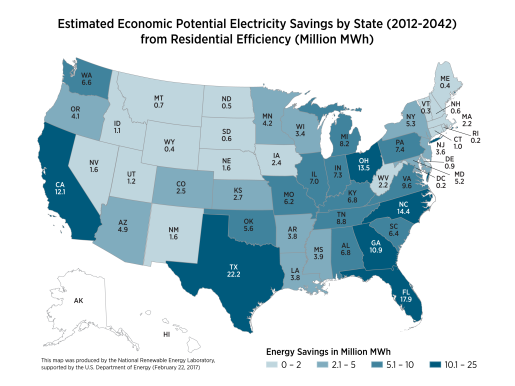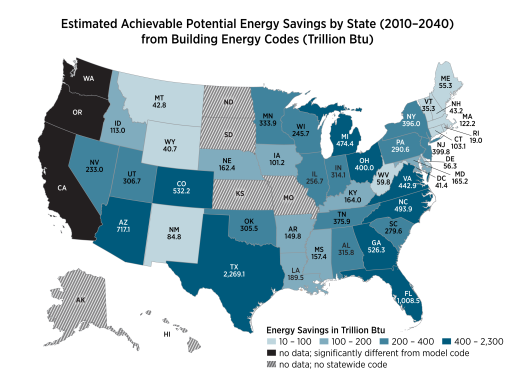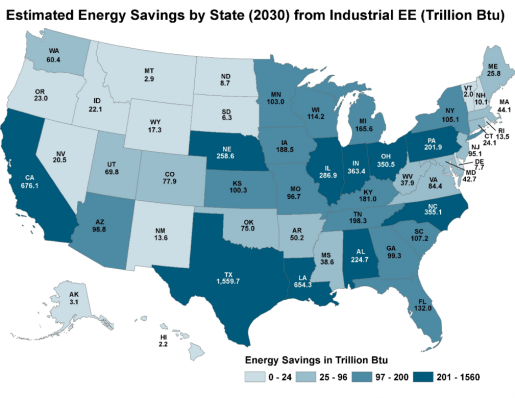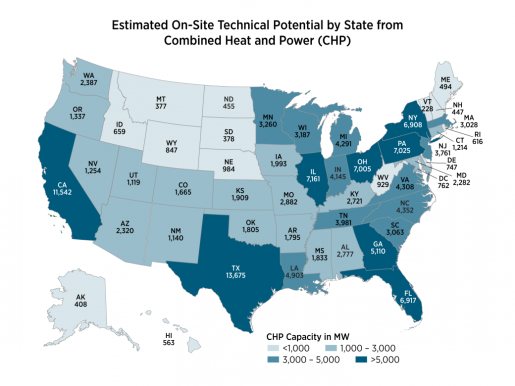State and local governments across the U.S. are focused on how clean energy can help them meet a variety of energy, economic development, and environmental goals. An early step for most energy efficiency planning involves identifying and quantifying energy savings opportunities, followed by understanding how to access this efficiency potential.
The Energy Department offers numerous resources that show cost-effective energy efficiency potential nationally and by state, along with information that speaks to diverse audiences about the many benefits of energy efficiency, and technical resources to understand the energy and emissions savings from efficiency.
Quick Links
- Factsheet: Energy Efficiency Opportunities and Benefits
- Infographic: The U.S. has the potential to cost-effectively reduce its electricity use by 741,000 GWh
- Webinar: Energy Efficiency Potential for States, July 13, 2017
Top resources for state and local government from the State and Local Solution Center.
U.S. Energy Efficiency Potential
- Catalog of State-Level Energy Efficiency Potential Studies
Compilation of approximately 80 energy efficiency potential studies published by states, utilities, and non-governmental organizations since 2007 that identify potential electricity savings available within their jurisdictions.
- Estimates of National and State-Level Energy Savings Potential (Maps and Detailed Studies)
Estimates of energy savings available across all sectors and from four specific types of energy efficiency opportunities.
Energy Efficiency Opportunities and Benefits
- SEE Action's Guide for States: Energy Efficiency as a Least-Cost Strategy to Reduce Greenhouse Gases and Air Pollution, and Meet Energy Needs in the Power Sector
A practical document including accessible information on common energy efficiency strategies, resources to understand the range of expected savings from energy efficiency, common protocols for documenting savings, and more.
- Pathways Presentations: How energy efficiency programs can support state energy planning
At-a-glance look at key considerations for including energy efficiency strategies in state planning, including current activity at the national and state levels, supportive state and local policies, best practices, energy savings examples and potential, cost-effectiveness, and DOE support. See below.
Presentations:
Technical Resources and Assistance
- SEE Action Evaluation, Measurement, and Verification (EM&V) Portal
A resource compendium for energy efficiency program administrators and project managers. Resources focus on tools and approaches that can be applied nationwide, address EM&V consistency, and are widely recognized.
- Energy Modeling 101 Presentation
This presentation from the DOE Office of Energy Systems and Policy Analysis covers the basics of power sector capacity expansion modeling and briefly touches on other types of modeling and analytical tools available to provide data on the electric power system, including energy efficiency.
- U.S. Energy and Employment State Report
This report provides a demographic and sector analysis of direct energy employment for each state across four categories: power generation, transmission, energy efficiency, and vehicles.
- Accessing DOE's Many Energy Efficiency Resources and Technical Assistance
Brief synopsis presentation of current DOE programs and resources (documents, tools) by sector that can support program administrators and planners interested in pursuing energy efficiency.
- State, Local, and Tribal Technical Assistance Gateway
Provides an access point to DOE's technical assistance and cooperative activities with state, local, and tribal officials.
- Detailed State Fact Sheets on EE Potential in Single Family Homes
NREL’s new research tool, ResStock, has identified $49 billion in annual cost-effective residential energy savings potential and the top 10 savings opportunities in 48 states.
A monthly update for state, local, and K–12 stakeholders featuring resources to advance successful, high-impact, and long-lasting energy efficiency and renewable energy partnerships, programs, and projects.
Contact Us
Reach out to the State and Local Solution Center at stateandlocal@ee.doe.gov.
For more resources, explore our all resources webpage.

